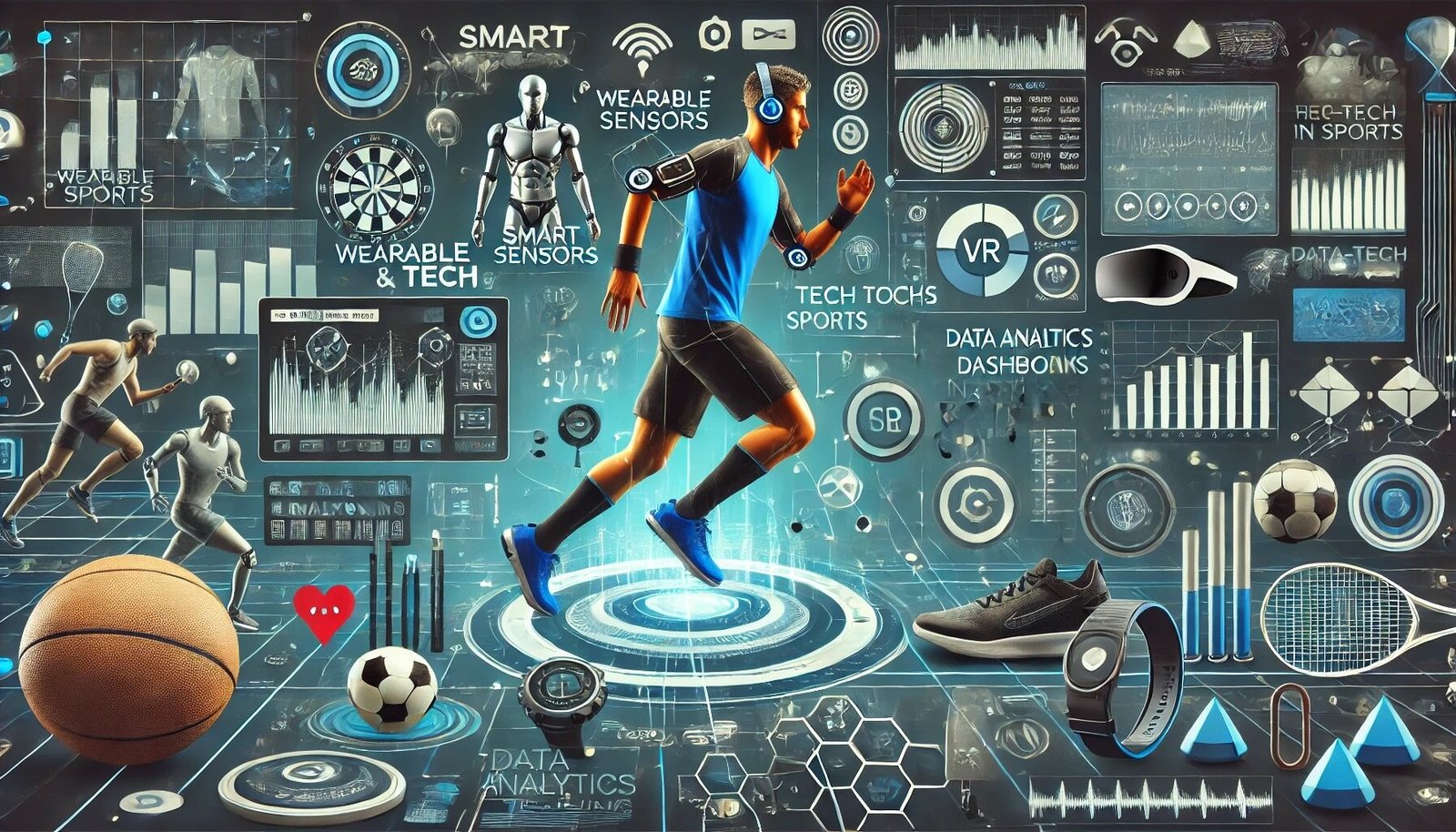
In the fast-paced world of sports, technology has become an essential tool for improving performance, enhancing fan experiences, and driving the growth of the industry. From tracking data to wearable tech, sports technology has evolved at a rapid pace, transforming how athletes train, compete, and recover. But the impact of innovation doesn’t stop at the athletes themselves – fans now experience games in ways that were once unimaginable.
In this blog, we will take a deep dive into the evolution of sports technology, exploring the key innovations that have shaped the sports industry over the years and how they are revolutionizing the way we play, watch, and engage with sports.
1. The Beginnings: Early Innovations in Sports Technology
The origins of sports technology date back much earlier than many realize. Simple tools like stopwatches and clocks helped track times in competitive sports, especially in track and field events. In the early 20th century, television broadcasts introduced a new way for fans to experience the games without attending in person.
However, it wasn’t until the late 20th century that the real transformation began to take shape, as digital technology and computing began to make their way into sports.
2. Data Analytics and Performance Metrics: The Game Changer
As the sports world became increasingly data-driven, the role of data analytics in coaching, performance analysis, and team strategy grew immensely. Advanced statistics have allowed teams to gain deeper insights into player performance, health, and tactical strategy.
Player Tracking and Advanced Metrics
Today, wearable tech such as GPS trackers, heart rate monitors, and smart apparel collects vast amounts of data on players’ movements, stamina, and speed. One of the biggest breakthroughs came with the use of wearable sensors that track metrics like acceleration, velocity, and distance covered during training and matches.
In basketball, for example, companies like STATSports and Catapult offer wearables that help coaches and athletes track energy expenditure, jump height, and agility. These metrics allow for more precise training regimens and performance optimizations. Teams can track fatigue levels, optimize workloads, and design individualized recovery programs to avoid injuries.
Analytics in Action: The NBA and “Moneyball” Effect
In basketball, the application of data analytics has had a significant influence on coaching strategies and player development. Much like the Moneyball revolution in baseball, basketball teams now use advanced stats like player efficiency ratings (PER), effective field goal percentage (eFG%), and box plus-minus to make more informed decisions about player acquisitions, game tactics, and in-game decisions.
3. Wearable Technology: Smart Gear for Smarter Athletes
One of the most significant advancements in sports technology has been the development of wearable devices designed to monitor an athlete’s physical performance in real-time. These devices are now integral to sports training across the world, especially in elite-level sports.
Smart Shoes and Performance Footwear
The development of smart running shoes has taken wearables to the next level. Companies like Nike and Adidas have introduced shoes equipped with sensors that can track data such as speed, distance, foot strike patterns, and even calories burned. This technology helps runners and basketball players understand their form and improve their performance over time.
Additionally, some shoes now incorporate automatic lacing systems and temperature regulation to improve comfort during intense workouts or matches.
Smart Clothing: Sensors Built into Gear
Athletes are also wearing smart clothing designed with embedded sensors that track things like muscle strain, heart rate, and hydration levels. These garments give coaches a closer look at an athlete’s physical condition, allowing them to adjust training sessions or intervene before injuries occur.
4. Virtual and Augmented Reality: Transforming Fan Experiences
Technology has not only revolutionized how athletes perform but also how fans interact with sports. Virtual Reality (VR) and Augmented Reality (AR) have added a new dimension to the fan experience, making it more immersive and interactive.
Virtual Reality (VR): Immersive Fan Experience
In 2024, fans can now experience live games in virtual reality. Using VR headsets, viewers can watch a basketball game as if they were courtside, providing an experience almost as immersive as being there in person. VR technology also allows fans to engage in virtual training sessions, where they can play and compete in simulated versions of their favorite sports.
The NBA, for example, has partnered with companies like NextVR to offer VR broadcasts of live games. Fans can enjoy the feeling of being on the floor with their favorite players, watching every shot and every play from multiple angles.
Augmented Reality (AR): Enhancing Broadcasts
Meanwhile, Augmented Reality (AR) has become a game-changer for sports broadcasting. Broadcasters now use AR to superimpose graphics onto live feeds, showing things like player stats, game scores, or visualizations of strategies in real-time. This adds layers of detail and excitement to the viewer experience that were not possible with traditional TV broadcasts.
5. Smart Stadiums and Fan Interaction: A New Era of Stadium Experience
Sports venues are also becoming smarter, thanks to the integration of technology. Smart stadiums are changing how fans experience games, providing conveniences like mobile ticketing, cashless transactions, and real-time data feeds.
Interactive Stadiums
In stadiums like the Mercedes-Benz Stadium in Atlanta or the SoFi Stadium in Los Angeles, fans can use mobile apps to access exclusive content, order food and drinks, or even engage with AR experiences during halftime. These innovations not only enhance the overall experience but also make fans feel more connected to the game and the players.
AI-Powered Security and Smart Seats
Stadiums are increasingly utilizing AI-powered security systems to enhance safety, ensuring a smooth and secure fan experience. Smart seats that adjust for comfort and provide personalized content through digital screens are now a common feature in many modern arenas.
6. The Future: What’s Next for Sports Technology?
As technology continues to evolve, the future of sports promises even more groundbreaking innovations. 5G networks are expected to revolutionize how data is transmitted in real-time, enhancing the performance of wearable devices and live-streaming experiences.
Artificial Intelligence (AI) will play a larger role in predicting player injuries, optimizing training schedules, and creating advanced game tactics. Meanwhile, biotechnology could soon enable athletes to recover faster and perform better through breakthroughs in genetics and personalized medicine.
Conclusion: A Changing Game for Players and Fans
The evolution of sports technology has undoubtedly changed the way athletes train, perform, and recover. From advanced wearable devices to immersive fan experiences, technology is continuing to break new boundaries in sports. As innovation continues to shape the industry, we can expect even more exciting advancements, improving the game for athletes, teams, and fans around the world.
Whether it’s enhancing athletic performance, creating new ways to watch games, or improving player safety, sports technology is redefining the way we experience the world of sports. The future of sports is incredibly bright, and technology is at the forefront of that exciting journey.
